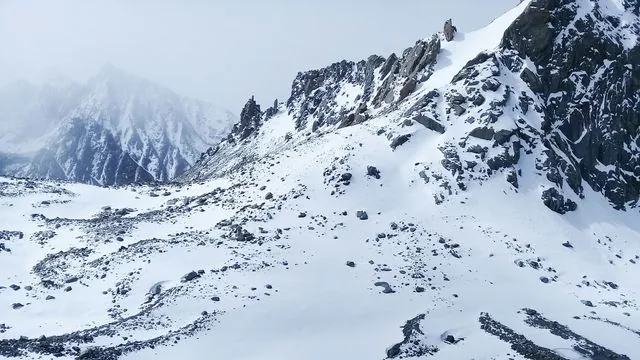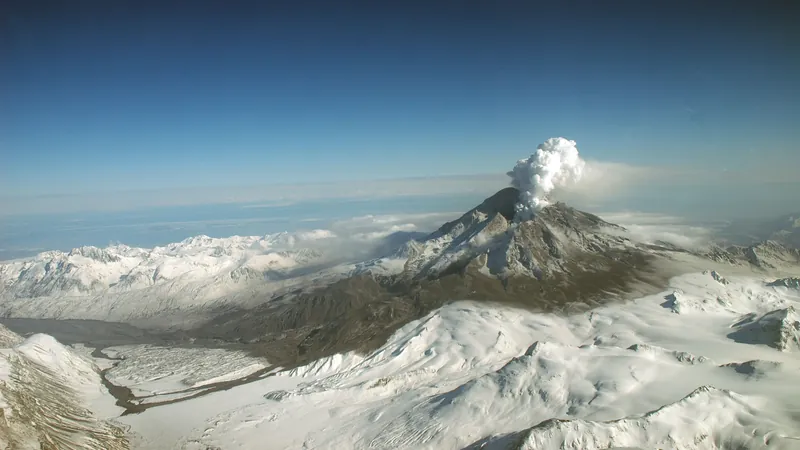
Shocking Discovery: Lead Pollution Found in Ancient Tibetan Glacier!
2024-11-06
Author: Emily
Groundbreaking Discovery
A groundbreaking study has revealed that human activities have impacted some of the most isolated regions of the planet, highlighting the dire consequences of industrialization. Researchers examining ice cores from the Guliya ice cap in northwestern Tibet have compelling evidence of lead pollution, demonstrating the far-reaching effects of human actions on the environment.
Significant Shift in Lead Sources
By analyzing lead isotopes embedded in dust-filled samples taken from these ancient glaciers, scientists were able to chart a significant shift in lead sources that can be traced back long after the onset of the Industrial Revolution. Interestingly, while lead levels started to increase in ice samples dating back to that pivotal period in history, it wasn’t until 1974 that researchers noticed a notable change in the origin of the lead detected. This shift coincided with strong emissions regulations in the U.S. aimed at reducing lead exposure.
Insights from the Research
Roxana Sierra-Hernandez, the lead author of the study and a senior research associate at The Ohio State University’s Byrd Polar and Climate Research Center, explained, “Our lead isotope samples date back about 36,000 years to when civilizations used no lead, reinforcing that much of what we found is natural. However, this study provides a unique opportunity to identify when human activity started marking its presence in these regions.”
Implications for Fresh Water and Health
Published in the journal Communications Earth & Environment, the research underscores a critical aspect of life for millions who depend on the Tibetan Plateau’s glaciers for fresh water. As global warming accelerates glacier melting, these communities face rising risks from dwindling water supplies, compounded by the release of trapped pollutants, including lead, back into the ecosystem.
Consequences of Melting Glaciers
“The pollution that settles into glaciers is released into rivers as these massive ice bodies melt,” Sierra-Hernandez noted, indicating the potential for serious environmental consequences.
Health Risks of Lead Pollution
Lead, while naturally occurring in small amounts from the Earth’s crust, poses severe health risks when introduced into the environment by industrial processes. Prolonged exposure can lead to devastating health issues ranging from cancer to reproductive problems. The implications of this research highlight the need for immediate attention to lead pollution, particularly as it has alarming effects on public health.
Evolving Sources of Lead Pollution
The study goes a step further by detailing how lead pollution sources have evolved, showing that until 2007, primarily Chinese gasoline was responsible for the majority of lead emissions. This was followed by an increase in emissions from coal and lead-zinc ores, indicating a significant change in pollution patterns.
Global Pollution and Policy Implications
“This emphasizes the dramatic shift in lead sources over the last few centuries,” Sierra-Hernandez stressed. “It also serves as a warning sign that pollution is a global issue, transcending borders. Policymakers worldwide must recognize that lead pollution remains a threat and urgently implement measures to mitigate it.”
Future Research Directions
Moreover, the research is not without broader implications. By utilizing lead isotopes as chemical fingerprints, scientists can track the sources of pollution even from far-off regions. This opens doors for future studies, allowing researchers to conduct comparative analyses of pollution trends in ice core samples from glaciers all over the world.
Conclusion
Sierra-Hernandez concluded, “There is a significant amount of knowledge to be gained from continued lead isotope research. Although it requires time and painstaking effort, the potential for breakthroughs in understanding pollution sources is immense. We must invest in this vital area of study to better inform environmental practices moving forward.” This striking research serves as a reminder that even the most remote areas of the world are not immune to the effects of human activities, urging countries to collaborate on solutions to a shared problem that threatens both the environment and human health.









 Brasil (PT)
Brasil (PT)
 Canada (EN)
Canada (EN)
 Chile (ES)
Chile (ES)
 España (ES)
España (ES)
 France (FR)
France (FR)
 Hong Kong (EN)
Hong Kong (EN)
 Italia (IT)
Italia (IT)
 日本 (JA)
日本 (JA)
 Magyarország (HU)
Magyarország (HU)
 Norge (NO)
Norge (NO)
 Polska (PL)
Polska (PL)
 Schweiz (DE)
Schweiz (DE)
 Singapore (EN)
Singapore (EN)
 Sverige (SV)
Sverige (SV)
 Suomi (FI)
Suomi (FI)
 Türkiye (TR)
Türkiye (TR)